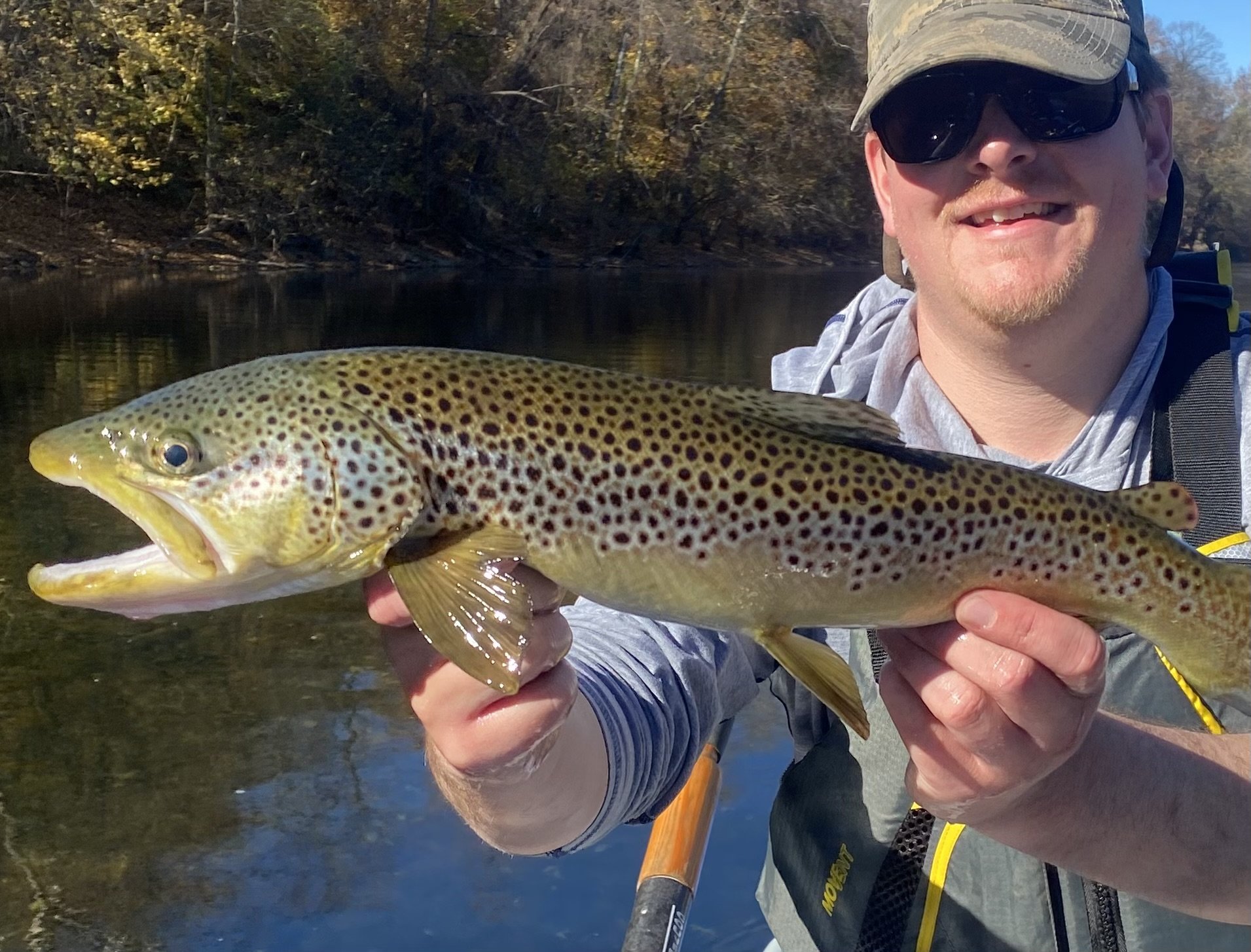
Your Guide To Fly Fishing In Pennsylvania
Fly Fishing Pennsylvania Waters
Penns Creek
Penns Creek originates out of Penn’s Cave near the town of Spring Mills, PA and flows east roughly 67 miles until it meets the Susquehanna River near Selinsgrove, PA. Once called the Kaarondinhah by the Iroquois who inhabited the area in the 17th and 18th century, Penns Creek has a rich history and will forever be one of Pennsylvania’s most iconic streams. Enjoy pristine views within the Penns Creek Wild Area or see the famous narrow gauge rail tunnels at Coburn and Poe Paddy State Park. In the upper reaches below the cave, consistently cool water maintains one of Pennsylvania’s healthiest and most prolific wild trout streams. With a Class A designation through the upper reaches, it is home to fantastic brown trout populations and a fast growing large brook trout population. Penns has earned the status of a “bug factory” making it a fly-fisher’s dream and home to the legendary Green Drake hatch - arguably the largest Green Drake hatch on the east coast. From the first hatches of grannoms and hendricksons, to sulphurs, march browns, grey fox, green drakes, and slate drakes, trout forage year round on the prolific bug life - resulting in a pleasant size average of fish.
Spring Creek
Simply put, Spring Creek is Pennsylvania’s most prolific wild brown trout fishery. It boasts the highest density of brown trout than any other stream in the Keystone State. Stemming from the mountains east of State College and Penn State University, it flows northward through the suburbs of State College and through historic downtown Bellefonte to its mouth with Bald Eagle Creek in Milesburg, PA. A shadow of its former self, this fishery is one of the largest stories of success in waterways conservation - its history is riddled with pollution from industrial wastes, chemical and gasoline spills, and current urban sprawl from the fastest growing city in Centre County. It’s success comes from no-kill management - a keystone in Spring Creek’s vitality. Fishable in most sections nearly year-round, it’s our go-to summertime trout fishery while other waters warm above a safe threshold for trout. Spring Creek holds Class A designation through it’s entire reach, giving it extra protections for the future. Known for the famous “Fisherman’s Paradise” and homewaters of Joe Humphreys - it is just that… an angler’s paradise with ample access through the entire system.
Big Fishing Creek
Big Fishing Creek is one of Pennsylvania’s scenic wonders - originating on a mountain top, between the lanes of I-80. Flowing almost 43 miles, all of those miles contain trout. The upper reaches are teaming with brook and brown trout, while the lower reaches are predominantly brown trout, with a few brook and rainbow trout found. The most notorious section called “The Narrows” offers the angler a pristine getaway, prolific hatches, and cold fishable water, even through the summer. With Class A designation - it holds extra protections against development and securing its vitality for future generations. Mirroring Penns Creek’s hatches, it can be a fantastic dry fly fishery where anglers will find grannoms, sulphurs, march browns, and green drakes, blue-winged olives and slate drakes in the spring and into summer. With long deep runs and pocket water in between, it is ideal for all forms of fly fishing - streamers, nymphing, and dry flies.
Juniata River
Pennsylvania offers some of the best smallmouth bass fishing in the east. Whether you are into light tackle or fly fishing, it will be your new favorite summer activity. Experience fishing for trophy smallmouth on the gentle views of the Juniata River, flowing through mountains and farmland of central Pennsylvania. We target bass from March/April all the way through November, giving us options outside of trout fishing. The Juniata is managed as a year-round, catch-and-release smallmouth fishery from the State Route 75 bridge at Port Royal downriver to 0.5 miles upriver of the confluence with the Susquehanna River near Duncannon. The bass in the Juniata have seen their share of struggles, but with proper management over last decade, the population has rebounded and still on the rise. Trophy-sized bass are back, with quite a few fish 20 inches or greater becoming common. Pound for pound, river smallmouth are arguably Pennsylvania’s hardest fighters, and offers a fun Spring and Summer activity on rod & reel or on a fly rod.
Lake Erie Tributaries - Steelhead Alley
Pennsylvania’s Lake Erie Tributaries - a part of the greater “Steelhead Alley” - brings anglers from all over the country to target great lakes steelhead - genetically similar to those from their native ranges in Northwest North America. At the end of the day, these large lake-run rainbows are just plain fun. From October to April, barring frozen streams in winter, these trout have a fall run and a spring run which bring them into the creeks to spawn, making them targetable by fly-anglers. Some believe that some of these fish may spawn in both Fall and Spring, while most out-migrate during post-spawn. The Fall run steelhead may also be accompanied by lake-run brown trout and potential for a few Coho salmon. The Spring run witnesses a lesser crowd, but weekends and days with nicer weather are still busier on popular stretches. Brown trout, large suckers, and smallmouth can be caught near creek mouths at this time. While spawning behavior is still not fully understood on some of the tributaries, all of the great lakes states utilize stocking programs to populate Lake Erie. A shadow of their Pacific-Northwest relatives, the number of fish that run in some of the tributaries is a sight to behold - some holes may have fish stacked like cordwood. The busiest season is in October and November, when the greatest number of fish run - however, there is an increase in public access, allowing anglers to spread out amongst over 20 different tributaries - the largest being Elk, Walnut, and 20-Mile Creeks, respectively.




